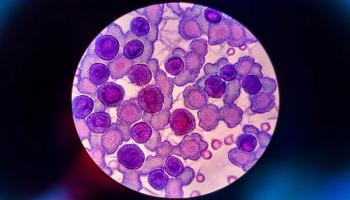
- June 2016 Women's Health
- Volume 82
- Issue 6
Managing Pregnancy Symptoms: Quick Tips for Relief
Nausea is the most common gastrointestinal symptom experienced during pregnancy.
NAUSEA AND VOMITING
Although the cause of nausea and vomiting during pregnancy is not known, the increase in the hormone human chorionic gonadotrophin is believed to be involved. Nausea is the most common gastrointestinal symptom experienced during pregnancy. Nausea and vomiting are estimated to occur in about 80% to 85% of all pregnancies during the first trimester. In 15% of women, nausea and vomiting may continue throughout the entire pregnancy. It is important to note that vomiting is rarely present without nausea.1,2
TREATMENT
Nonpharmacologic1,2
- Dietary modifications (Table 12)
- Environmental changes
- Acupressure, such as BioBands and Sea-Band, which are worn on 1 hand
- Acustimulation, such as ReliefBand NST (nerve stimulation technique), which is worn on 1 hand
The use of acupressure and acustimulation for managing nausea and vomiting during pregnancy has produced mixed results. Therefore, these treatments are recommended for mild or moderate cases.2
Pharmacologic
- Ginger (Zingiber officinale): The use of ginger 250 mg 4 times a day has been shown to reduce the severity of nausea and vomiting in several studies.1
- Vitamin B Pyridoxine (vitamin B6): The American College of Obstetricians and Gynecologists (ACOG) suggests initiating pyridoxine at 10 to 25 mg 3 or 4 times a day.2 Cyanocobalamin (vitamin B12): Two studies have shown a significant reduction in nausea and vomiting with the use of cyanocobalamin. However, studies evaluating its safety were not identified.1
- Phosphorated carbohydrate solution: a mixture of levulose (fructose), dextrose (glucose), and phosphoric acid. The recommended dose is 15 to 30 mL on arising for the day, and every 3 hours if nausea continues. Because of the high fructose and glucose content of this solution, it may not be a good option for women who have diabetes or hereditary fructose intolerance.2
- Antihistamines, such as meclizine and diphenhydramine: These are not FDA-approved for treating nausea and vomiting during pregnancy. With a Pregnancy Category B, these medications carry a low risk of teratogenicity.2 Another antihistamine used to treat nausea and vomiting in pregnancy is promethazine. Although promethazine is classified as Pregnancy Category C, a review showed no significant increased risk of teratogenicity when evaluating the safety.1
- Antiemetics, such as ondansetron, are also used to reduce nausea and vomiting. Ondansetron is classified as Pregnancy Category B.3
- Combination of doxylamine and pyridoxine: ACOG recommends doxylamine as a second-line treatment at a dose of 12.5 mg 3 or 4 times a day.2
RECOMMENDATION
Inform women that most cases of nausea and vomiting resolve on their own during weeks 16 to 20 of gestation. If nausea or vomiting is severe and does not respond to nonpharmacologic measures, the use of antihistamines may be considered.1,2 If OTC treatment options are ineffective, ondansetron may be prescribed.
Note that further research is required to evaluate the safety of all nausea and vomiting interventions, except antihistamines.1
HEARTBURN
Heartburn is another common symptom during pregnancy. In one large study that evaluated 607 pregnant women, 22% of the women reported having heartburn in the first trimester, 39% reported having it in the second trimester, and 72% reported having it in the third trimester.1
TREATMENT1
Nonpharmacologic1
- Awareness of posture and maintaining an upright position, especially after meals
- Sleeping in a propped-up position
- Dietary modifications (Table 22): Eat small, frequent meals Limit high-fat foods Limit foods that can cause gastric irritation, such as caffeine
Pharmacologic2
- Antacids
- H2 blockers
- Proton pump inhibitors
RECOMMENDATIONS1,2
Mild and infrequent heartburn can be managed by lifestyle and dietary modifications. If these changes are ineffective in managing heartburn and it remains problematic, antacids, such as those containing calcium and magnesium, can be given. These antacids are Pregnancy Category B. It is important that patients not exceed the recommended daily dose.
It is important to consider a woman’s daily intake of calcium during pregnancy, especially if a calcium-containing antacid is added to her regimen. Pregnant women should take 1000 to 1300 mg of calcium per day.2
Women who experience frequent and moderate heartburn should see their health care provider for supervised management.2 Histamine2 (H2) blockers, such as Tagamet (cimetidine), Pepcid (famotidine), Zantac (ranitidine), and Axid (nizatidine), are classified as Pregnancy Category B and have been used during pregnancy. However, women should seek care from their health care provider instead of trying to self-treat their heartburn with H2 blockers. The proton pump inhibitor Prilosec (omeprazole) is classified as Pregnancy Category C and, therefore, should be taken only under a physician’s supervision.2
CONSTIPATION
Constipation is commonly reported during gestation, affecting approximately 1 in 3 pregnant women.1,2 Constipation is thought to be caused by several factors, such as a growing uterus pushing on the colon, a reduction in intestinal muscle tone, and an increase in the progesterone level, all of which affect gastric motility and gastric transit time.1,2 The use of prenatal supplements containing iron and calcium may also be a contributing factor.2
The primary goal in treating constipation during pregnancy is to soften stools without using laxatives.2
TREATMENT
Nonpharmacologic1,2 (Table 32)
- Dietary modification Increase fiber intake Increase intake of prunes or prune juice
- Ensure adequate fluid intake
- Be physically active (an exercise program must be approved by a physician)
Pharmacologic
- The use of bulk-forming laxatives
RECOMMENDATIONS1,2
Patients should increase their fiber intake and include prunes and/or prune juice into their diet. Bulk-forming laxatives are considered the first-line treatment in managing constipation during pregnancy, as this drug class is deemed safe and effective. With the use of these products, women should consume at least 1500 mL of fluids every day or at least 8 oz of fluid with each dose. If bulk-forming laxatives are not effective or are not tolerated well, other treatment options include emollient, senna, or bisacodyl. Medications that should not be used during pregnancy include saline cathartics.2
HEMORRHOIDS
Hemorrhoids are more common in the last trimester of pregnancy. The results of one study showed that 8% of pregnant women experience hemorrhoids in the last trimester.1
TREATMENT
Nonpharmacologic2
- Dietary modification Increase fiber intake Maintain adequate hydration
- Take a sitz bath 2 or 3 times a day
Pharmacologic2
- Only products for external use should be used
- Protectants, except glycerin, can be used internally
RECOMMENDATIONS
Nonpharmacologic measures should be initiated to manage hemorrhoids. The intake of fiber and fluids should be increased. Sitz baths can be incorporated into the management plan.2 Review the patient’s supplements to ensure that calcium and iron do not exceed the recommended daily doses.2 Patients should be instructed to clean the anorectal area after each bowel movement. Patients should use a moistened, unscented, white toilet tissue or wipe.2
If medication is warranted, protectants are a good option because they are minimally absorbed. Protectants, except glycerin, can be used during pregnancy to temporarily relieve hemorrhoids that are causing discomfort, itching, irritation, and burning. If other agents are used, only products for external use are recommended.2
Dr. Garza received her doctor of pharmacy degree from the University of Texas at Austin. She is currently working as the director of the Life Sciences Library at RxWiki, where she continues to build her practice on the fundamental belief that providing patients with medication information and medical knowledge contributes significantly to the quality of care they receive, and improves quality of life and health outcomes. Her work focuses on educating patients and providing them with the resources needed to navigate the overwhelming and complex health system. Before RxWiki, she was director of pharmacy for a Central Texas Department of Aging and Disability facility.
References
- Antenatal care: routine care for the healthy pregnant woman. National Institute for Health and Clinical Excellence: Clinical Guideline. 2nd ed. Regent’s Park, London: Royal College of Obstetricians and Gynaecologists; 2008.
- Shane-McWhorter L, Oderda L. Nausea and vomiting. In: Berardi RR, Ferreri SP, Hume AL, et al, eds. Handbook of Nonprescription Drugs: An Interactive Approach to Self-Care. 16th ed. Washington, DC: American Pharmacists Association; 2009.
- Zofran [package insert]. Mississauga, Ontario: GlaxoSmithKline, Inc; 2014.
Articles in this issue
over 9 years ago
Improving Health Through Medication Accessover 9 years ago
Generic Therapeutic Substitution Could Curb Soaring Drug Costsover 9 years ago
Case Studies (June 2016)over 9 years ago
Generic Product News (June 2016)over 9 years ago
Pet Peeves (June 2016)over 9 years ago
Can You Read These Rxs? (June 2016)Newsletter
Stay informed on drug updates, treatment guidelines, and pharmacy practice trends—subscribe to Pharmacy Times for weekly clinical insights.


















































































































































































































